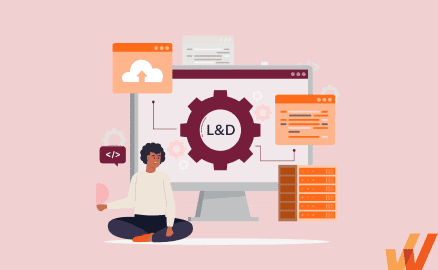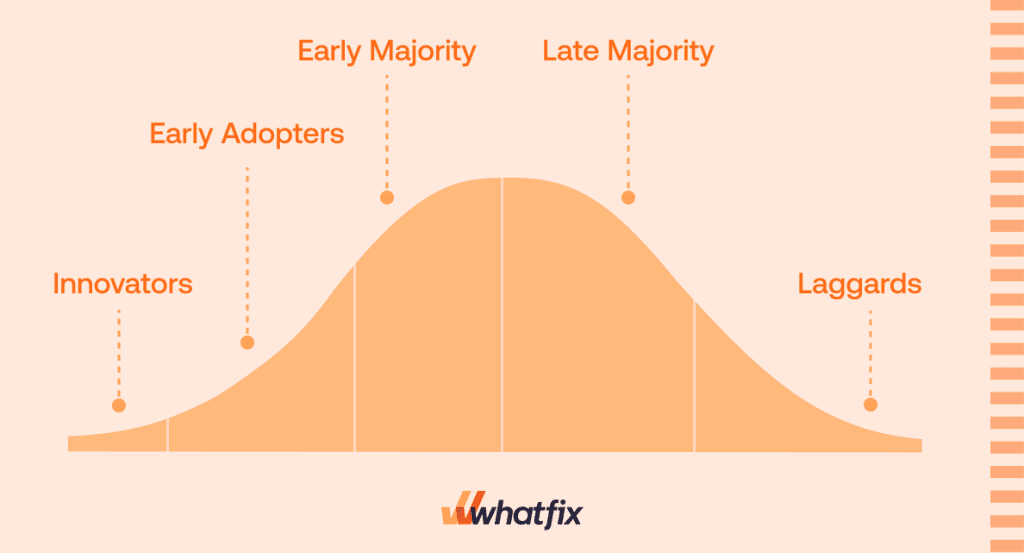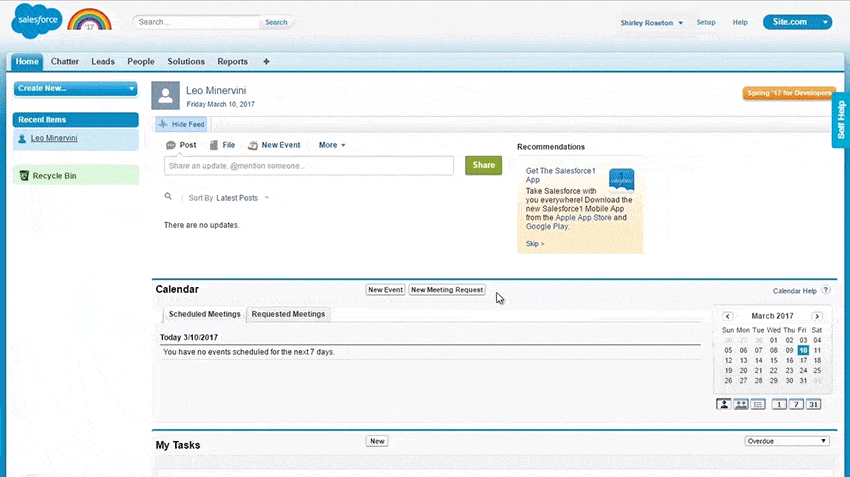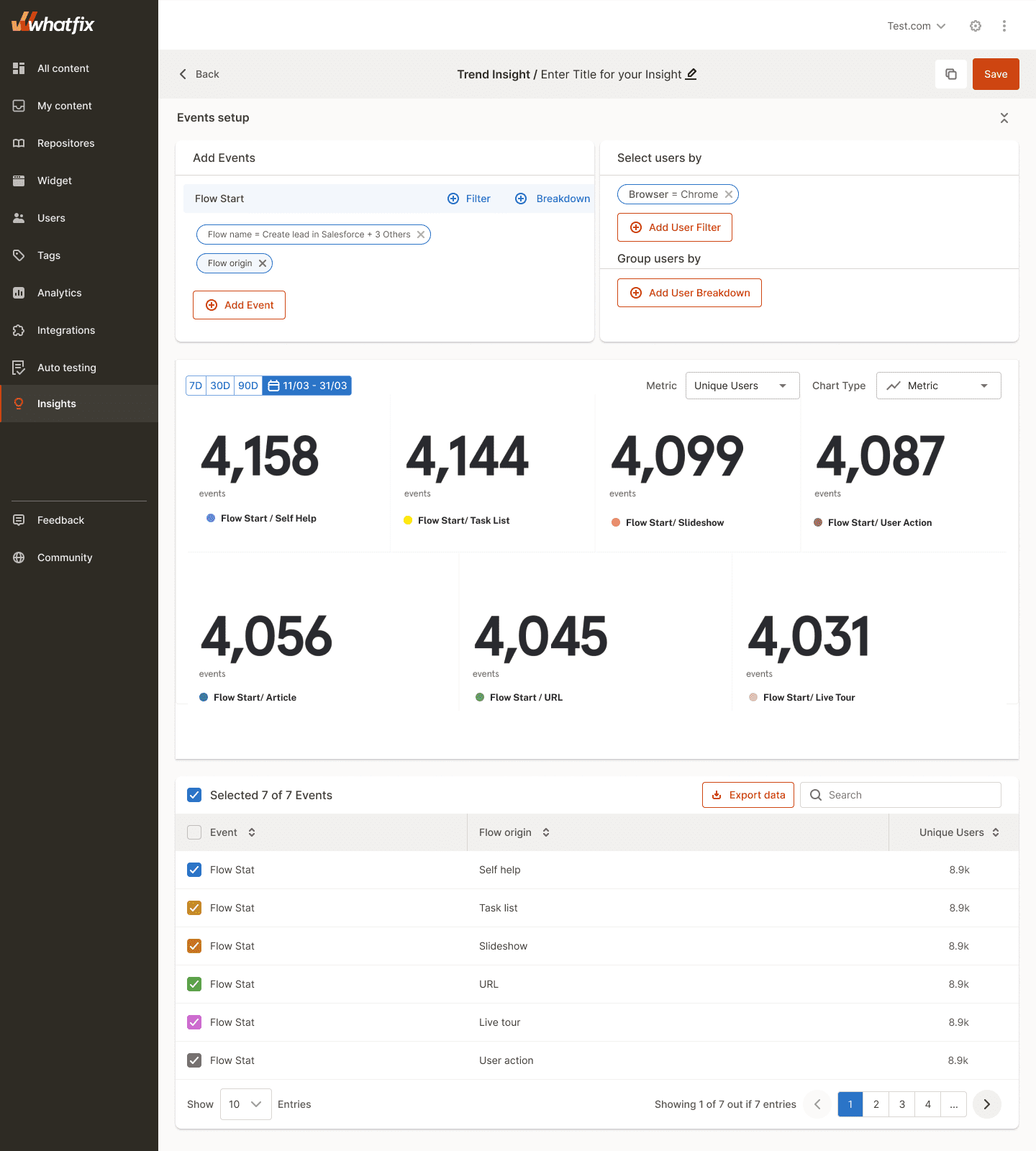11 Corporate L&D Challenges to Watch in 2024
- Published:
- Updated: April 15, 2024

Enterprises have invested heavily in learning and development strategies post-COVID, with L&D professionals now sitting at the C-suite table.
This is a result of the corporate world digitally transforming quickly, while also continuously evolving at a pace that pressures employees and leadership to maintain a balance between taking advantage of new technologies, while fighting change fatigue and enabling employees to use these applications correctly and comprehensively.
There are additional challenges L&D teams face that pressure the function, such as addressing the diverse needs of a multigenerational workforce, proving ROI of training programs amid tighter budgets, integrating GenAI into workflows, and hiring and retaining talent in a post-’Great Resignation’ era. Not to mention the in-person, hybrid, remote work question that no two companies tackle the same.
In this article, we break down eleven critical challenges facing L&D teams and provide insights and solutions for L&D professionals and training managers to survive and thrive in an evolving digital landscape. We also showcase how Whatfix empowers L&D strategies by enabling employees with contextual guidance and support in the flow of work to maximize productivity and create frictionless digital employee experiences.
What are the 11 biggest challenges facing L&D teams in 2024?
- Digital transformation
- Change management
- Scaling the role of L&D
- Using data to make better L&D decisions
- Personalization of learning experiences
- The remote and hybrid workplace
- Managing budget constraints
- Ensuring engagement and motivation
- AI training
- Fostering a learning culture
- Measuring training ROI and learning impact
11 Critical Challenges Facing L&D Teams in 2024
With organizations now heavily invested in new L&D trends, here are some of the most critical challenges facing L&D teams in 2024.
1. Digital transformation
Digital transformation modernizes business processes by replacing traditional, legacy processes and systems with new digital technologies and cloud software applications. A report from World Economic Forum found that moving manual labor from humans to machines will lead to the loss of 85 million jobs by 2025 – but also create 97 million new ones.
Examples of digital transformation in various industries include:
- Enterprise companies adopting AI and machine learning into their marketing, sales, and recruiting processes to eliminate manual processes – as well as employee engagement, employee performance monitoring, online learning, and remote onboarding to manage a remote workforce.
- Restaurants adopting QR code menus, online waitlist apps, mobile payments, and integrated POS tools with loyalty features.
- Multifamily property companies adopting video intercom systems, amenity reservation apps, online payment systems, property management software, and more to manage their community virtually.
- Universities adopting remote student orientation, fully-virtual classrooms, and online assessments.
With such rapid adoption of new technologies and processes, L&D teams face the challenge of digital dexterity, enabling the workforce to harness the power of new digital tools and adopt new, more efficient processes.
Organizations must reskill their entire workforce on how to utilize the new organization-wide practices best – while also keeping day-to-day productivity high. They also face challenges around evolving job duties – as new tech makes certain job functions obsolete – while creating new opportunities.
L&D teams need to understand their workforce well. This means creating user personas on different learning personality types in their organization and understanding how to best support employees who fall into various stages of the technology adoption curve.

Digital transformation is a significant challenge across all organization types and departments – but the success of these initiatives heavily falls on L&D teams that are challenged to create an effective migration strategy.

2. Change management
As organizations transform business with digital practices, processes, and tools through digital transformation efforts, there is a need to manage the migration phase. This is referred to as change management.
L&D teams are challenged to create cross-functional change management teams to champion and communicate change across the organization. At its core, change management is a people-focused initiative that requires adequate employee onboarding and training.
What are the top reasons organizations fail at change management?
Low internal buy-in
Lack of communication
No goals, KPIs, and measurement
Not people-centric
Not enough or ineffective training
Poor digital adoption strategy
L&D professionals must create an effective strategy to successfully transform their business and drive company-wide change.



3. Scaling the role of L&D
As businesses grow, diversify, and enter new markets, organizations have realized the importance of L&D teams in attacking specific problems such as remote work, racial injustices, employee shortages, and digital transformation head-on through training and employee support programs.
Organizations now see the value of investing in employee learning and development – and want to foster a learning culture for their companies.


LinkedIn’s Workforce Learning Report reinforced this idea, with 63% of L&D professionals say they have a seat at the c-suite table. L&D professionals are challenged with continuing to scale employee development and training efforts to improve productivity, upskill employees, foster adaptability in the workplace, and create a system that works to promote employees internally.
4. Using data to make better L&D decisions
In the age of big data, L&D professionals have access to an overwhelming amount of information from various sources, including learning management systems, employee performance metrics, and feedback surveys.
The challenge lies in extracting meaningful insights from this data that can directly influence and improve L&D strategies. This involves having the technical skills to analyze data and the ability to connect these insights to broader organizational goals.
Another layer of complexity is ensuring data privacy and security, especially when handling sensitive employee information. Balancing the need for comprehensive data analysis with ethical considerations and privacy regulations adds another dimension to the challenge.
Ultimately, leveraging data to make informed L&D decisions requires a blend of technical acumen, strategic thinking, and a deep understanding of the workforce’s learning needs and the organization’s objectives. Overcoming these challenges enables L&D teams to tailor their programs more effectively, allocate resources more efficiently, and ultimately contribute more significantly to achieving organizational goals.
5. Personalization of learning experiences
In a study conducted by HR Drive, 93% of the workers claimed they want employee training that is easy to complete. 91% want personalized training that’s relevant to their position, while 90% want training that is also engaging and fun.
In the dynamic world of corporate training, the shift towards personalized learning marks a significant evolution in how professional L&D is approached. Gone are the days of one-size-fits-all training programs; today, the focus is on delivering customized learning experiences that cater to the diverse needs, skills, and career aspirations of each employee.
This level of customization requires L&D teams to leverage advanced technologies such as artificial intelligence and machine learning to create adaptive learning platforms that can automatically tailor content to fit individual learning needs.
However, the complexity of integrating these technologies into existing L&D systems, ensuring data privacy, and maintaining the quality of personalized content can take time and effort. There’s also the ongoing task of measuring the effectiveness of customized learning experiences, necessitating the development of sophisticated metrics that can accurately assess the impact of tailored learning on individual performance and overall business outcomes.
Organizations can implement a digital adoption platform (DAP) like Whatfix to overcome these challenges.
A DAP enables employees by facilitating real-time learning directly within mission-critical enterprise applications like a CRM, ERP, HCM, or any software application that is critical to your business operations.
Whatfix enhances personalized learning by offering contextual, in-app guidance through interactive walkthroughs, pop-up tips, and self-help menus that appear just when the learner needs them, within the flow of their work.


This approach helps to immediately apply what is learned in practice, ensuring knowledge retention and reducing the learning curve for new software or processes. Whatfix can dynamically adapt its guidance based on the user’s role, actions, and proficiency, making the learning experience highly personalized.
Software clicks better with Whatfix's digital adoption platform
Enable your employees with in-app guidance, self-help support, process changes alerts, pop-ups for department announcements, and field validations to improve data accuracy.
6. The remote and hybrid workplace
At the start of 2023, a surge in classroom training was anticipated as employees returned to the office. However, as we know, the Great Return was insignificant, making remote and hybrid working models a permanent norm for many businesses.
This transition requires L&D professionals to rethink traditional employee training methods that were predominantly in-person and classroom-based, to accommodate a workforce dispersed across various locations, often spanning different time zones.
Adapting to this new reality means creating learning experiences that are not only accessible remotely but are also engaging and effective in retaining the learner’s attention in an environment filled with distractions. Additionally, ensuring equity in learning opportunities for both remote and on-site employees requires careful planning and execution, preventing a divide in the learning experience quality.
Balancing these demands while maintaining high engagement and effectiveness of L&D initiatives in a remote or hybrid work environment tests the adaptability, creativity, and technical proficiency of L&D teams like never before.
7. Managing budget constraints
Managing budget constraints poses a significant challenge for L&D teams, particularly in times of economic uncertainty or during organizational shifts that prioritize cost-cutting measures. For instance, in 2020, over a third of global L&D experts faced budget challenges as the pandemic caused a slowdown.
L&D departments often have to justify their expenditures and prove the ROI of their learning initiatives, which can be difficult when benefits, such as improved employee performance and engagement, are long-term and only sometimes immediately quantifiable in financial terms.
This pressure to demonstrate value forces L&D teams to make tough decisions about which programs to prioritize, potentially leading to scaling back or eliminating initiatives that could benefit the long run.
Additionally, budget constraints limit the ability of L&D teams to adopt new technologies and learning methodologies that could enhance the effectiveness of their programs. This includes everything from cutting-edge training software to innovative approaches such as virtual reality or personalized learning paths, often requiring significant upfront investment.
Managing budget constraints while delivering impactful and effective L&D initiatives requires creative problem-solving, strategic prioritization, and a keen ability to communicate the value and potential ROI of learning and development activities to stakeholders within the organization.
8. Ensuring engagement and motivation
Gallup’s State of the Global Workforce report found that only 11% of employees feel engaged at work. And this number can drop even further if employees feel their training programs are irrelevant, mundane, and not contextual to their needs.
In an era where attention spans are increasingly fragmented due to the digital bombardment of information and the flexibility of remote work, capturing and maintaining the interest of employees in training programs demands innovative and compelling content delivery.
L&D professionals are tasked with creating learning experiences that educate and resonate on a personal level with employees, catering to a wide range of learning styles, preferences, and career aspirations.
This requires incorporating interactive and multimedia elements, implementing bite-sized microlearning that can increase engagement by 50%, and creating a narrative that connects the learning objectives with the learners’ personal and professional goals.
9. AI training
Integrating AI into training programs requires L&D professionals first to understand the intricacies of AI technologies themselves.
This challenge is compounded by the diverse range of AI applications across different industries, meaning L&D teams must grasp the technology and its application to specific business contexts and workflows.
Moreover, creating effective AI training programs demands a shift in traditional training paradigms. Unlike more straightforward skills, AI involves technical knowledge, ethical considerations, and critical thinking about its implications for work and society. Designing courses that cover these multifaceted aspects requires expertise that may be limited within the organization, leading to the need for partnerships with external experts or institutions.
10. Fostering a learning culture
Deloitte found that companies with strong learning cultures were 92% more likely to be innovators and 17% more profitable than competitors.
Cultivating an environment where continuous learning is valued, requires embedding learning into the fabric of the organization’s daily operations and strategic vision. This challenge is compounded by the need to engage and motivate employees across the organization, each with unique skills, experiences, and attitudes toward learning.
L&D teams must navigate the delicate balance of advocating for learning as a priority while not overwhelming employees with mandates that could be perceived as additional tasks on their already tight schedules.
Additionally, measuring a learning culture’s impact also presents a challenge, as the benefits are often intangible and manifest over time, making it harder to demonstrate immediate value to the employees to boost motivation.
11. Measuring training ROI and learning impact
The challenge of measuring training ROI and impact stems from the intricate nature of learning outcomes, which are often qualitative and long-term, making them hard to quantify and directly correlate with immediate business results.
Compared to more tangible investments, the benefits of training, such as enhanced employee performance, increased morale, and improved organizational culture, can take time to manifest and may not be immediately apparent in financial statements or productivity metrics.
In environments where budget decisions are driven by quantifiable results, presenting compelling evidence of the value delivered by training initiatives requires sophisticated measurement and analysis techniques. Traditional metrics such as course completion rates or test scores may only partially capture the transformative potential of learning on individual and organizational performance.
To address these challenges, implement a digital adoption platform such as Whatfix that can significantly contribute to measuring training effectiveness by providing insights into learners’ actual usage and proficiency with digital tools and processes. These platforms offer real-time analytics that tracks employees’ interactions with software applications and digital workflows, capturing data on their actions, completion rates, and task efficiency.
By analyzing this data, L&D professionals can evaluate learners’ adoption and application of the training content in real-world scenarios. With the ability to monitor user engagement, performance, and feedback, DAPs offer a comprehensive view of training outcomes, enabling organizations to assess their training initiatives’ effectiveness, identify improvement areas, and make data-driven decisions to optimize the overall learning experience.


One of the biggest challenges facing L&D teams is driving the adoption of new software and digital processes throughout their workforce. L & D professionals should also take advantage of new technologies in employee training to support these initiatives.
Whatfix’s digital adoption platform empowers L&D teams to create in-app interactive workflows, onboarding tours, tooltips, data validation, and embedded FAQs – all built directly on their organization’s software applications. These tools allow employees to become proficient in new tools by learning in the flow of work with just-in-time support resources.
Set up a demo to learn more about driving digital transformation with Whatfix.


Thank you for subscribing!


